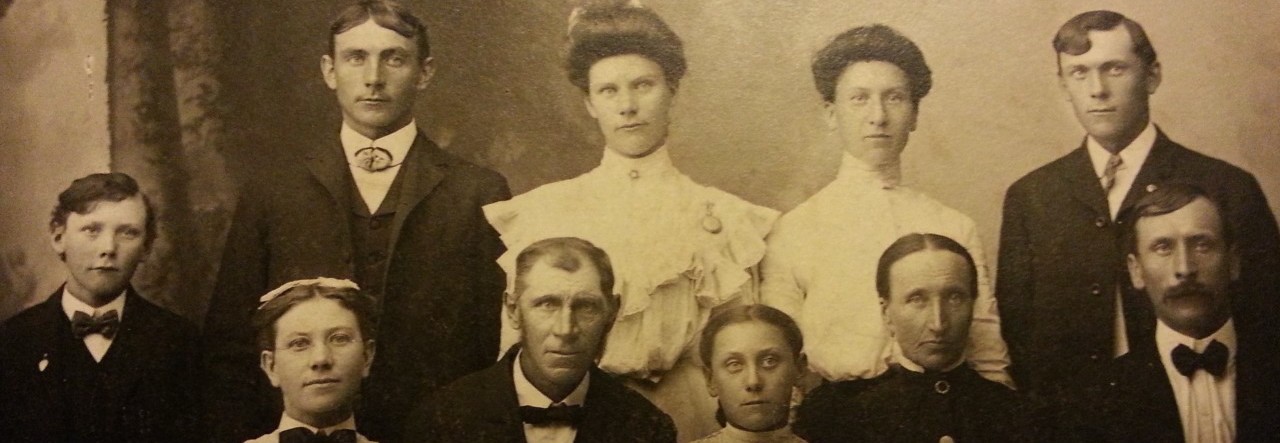Many years ago, when I began my search for my ancestry, I had one focus: Witherell. There were a variety of reasons for this:
- It’s my maiden name
- The origin stories and others made me very curious to know the truth: the name is Scottish; the name is British; the name came from the border of Scotland and England; they were sheepherders; someone was killed for stealing a horse, etc.
- Mary Witherell Hay Owen – the woman who really started it all for me. While wandering a cemetery, I saw her grave and was astounded she had my maiden name. Where did it come from?
Mary Witherell Hay Owen may have started my beginnings in genealogy, however, I never finished looking into her.
I was in college at the time when I was earnestly researching her so my research was sporadic at best. However, I had help from the wonderful librarians in my hometown as they were just as interested in this project as I was. They told me many things that I didn’t really look into much at the time but will prove useful as I search for her now:
- Her father, James Hay, was a wealthy Scottish lumberman in Saginaw, Michigan. He was the president of the Tittabawassee Boom Company and in 1859 went into business with Ezra Rust – who is a big name in Saginaw (there’s a park and street named after him).((History of Saginaw County Michigan; Together with Sketches of its Cities, Villages, and Townships, Educational, Religious, Civil, Military, and Political History; Portraits of Prominent Persons, and Biographies of Representative Citizens (Chicago: Chas. C. Chapman & Co., 1881), 666 and 695.))
- Mary married Edward Owen in 1889 – I did find the records to prove that. She was 22 at the time and Edward was 26. ((Michigan, Marriage Records, 1867-1952, vol.3:176, record number 1467, Edward Owen-Mary W Hay, 15 Oct 1889; image, “Michigan, Marriage Records 1867-1952,” Ancestry.com (http://www.ancestry.com : accessed 6 July 2015); citing Michigan Department of Community Health, Division for Vital Records and Health Statistics.)) Edward Owen’s father, John G, was also involved with lumber and salt works in Saginaw. ((History of Saginaw County Michigan; Together with Sketches of its Cities, Villages, and Townships, Educational, Religious, Civil, Military, and Political History; Portraits of Prominent Persons, and Biographies of Representative Citizens (Chicago: Chas. C. Chapman & Co., 1881), 575.))
- She was a lumber baroness – Although I can see where that might be true, after all both her father and father-in-law were in the business, I haven’t found anything to support that fact that her or her husband were involved in the business while she was alive. (If there was only the 1890 census, part of this question could be answered!)
- The Hay family had connections with the prominent Witherell’s of Detroit – James Witherell was a Judge of the Supreme Court for the Territory of Michigan and his son, Benjamin Franklin Hawkins Witherell was also a jurist in the U.S. State of Michigan and a justice on the Michigan Supreme Court. Now this may prove to be true – Mary’s mother’s maiden name is Hawkins as well. ((Michigan Marriages, 1851-1875, James Hay-Martha E. Hawkins, 13 Dec 1864; database and index, Ancestry.com (http://ancestry.com : accessed 6 July 2015), citing Wayne County, Michigan Marriages, 1851-1869, FHL Film 1377620-1377622.))
- Mary died in 1896 at the age of 28. Saginaw has an online record of burials that can sometimes include how the person died. In Mary’s case it was phthisis, also known as consumption or tuberculosis.((Public Libraries of Saginaw, “City of Saginaw Cemeteries Search,” database, City of Saginaw Cemeteries (http://cemeteries.saginaw-mi.com : accessed 6 July 2015), entry for Mary Owen, Oakwood Cemetery, Section 14, Lot 113, burial 26 May 1896, Saginaw, Michigan.))
So my main research question from the early 2000’s was: Is she related to me? As far as I could tell at that point, no. There is a Witherell book that focuses on two progenitors in America: Rev. William Witherell and William Witherell. That book connects the Detroit Witherell’s I mentioned to them but my family is NOT in that book. Maybe I could still be related to one of those two progenitors, but my research showed no connection. Because of that missed connection, I stopped researching her all those years ago. side note: I have gone further back in my Witherell line since then, but the names are still not in that book.
I am picking this ‘mystery’ back up again! I doubt it is a real mystery since I have quite a bit of information on her from before that will likely lead to a lot more. When I first started looking into this woman, I really had no idea where to go or what I was doing! I’ve learned quite a bit since that time so it’ll be fun to see what I can find out now.
Stay tuned!


![By Jenney, J. A. (James A.) -- Photographer [Public domain], via Wikimedia Commons](https://i0.wp.com/www.copperleafgenealogy.com/wp-content/uploads/2015/07/Men_sawing_at_the_lumber_camp_by_Jenney_J._A._James_A.-e1436201524910.jpg?resize=500%2C287)









